|
   |
|
Page 4 |
Newsletter 145 Summer 2024 © Hampshire Mills Group |
|
Mills and Dales
Ruth Andrews
Photos by Ruth and Keith Andrews
|
Four weeks after our visit to the Forest of Dean we
went to Swaledale for a week and were much
more successful, although most of the mills we found
were in Wensleydale.
|
|
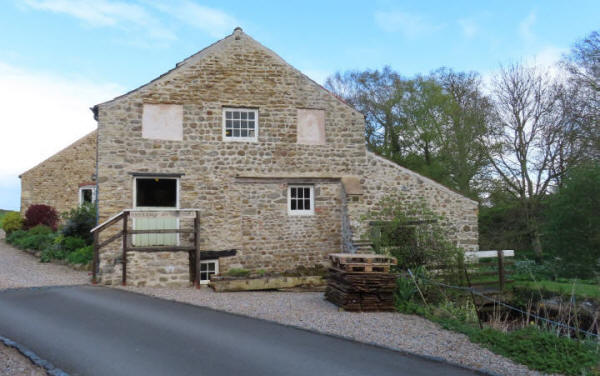
|
A corn mill was in existence at Little Crakehall
near Bedale on Crakehall or Bedale Beck from the
17th century, and it has miraculously survived. It
is open on Sundays once a month, and has a website
which invites casual visitors at other times. |
|
It is owned and worked by Lionel Green and Alison
Barnes who bought it in 2004, intending to develop
the mill house for B&B accommodation. They knew
nothing about milling but, having contacted SPAB for
advice and assistance, they somehow ended up running
it commercially full-time. They now mill spelt and
wheat (Crusoe) which used to be grown locally but is
now bought in from County Durham.
The building was derelict for some 40 years after
milling ceased in about 1930, but it was bought and
restored in 1977, and at this time the mill and mill
house were listed grade 2. This listing was
acquired just in time to stop it being demolished
for housing. It restarted milling in 1980, before
closing for a second time in 2002-10.. After this,
the present owner carried out further extensive
repairs, assisted by Martin Watts, and then-opened
and began commercial milling. The 2010 repair work
was filmed for BBC2 in conjunction with the
establishment of Bedale Community Bakery, and it
appeared in Countryfile in 2011.
There were originally four sets of stones, but now
just two; both are French buhr. The photos below
give some impressions of the machinery.
|
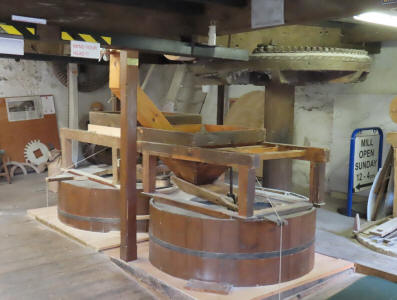 |
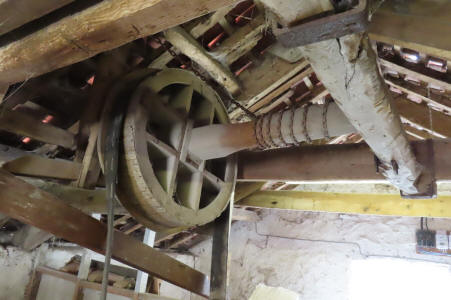 |

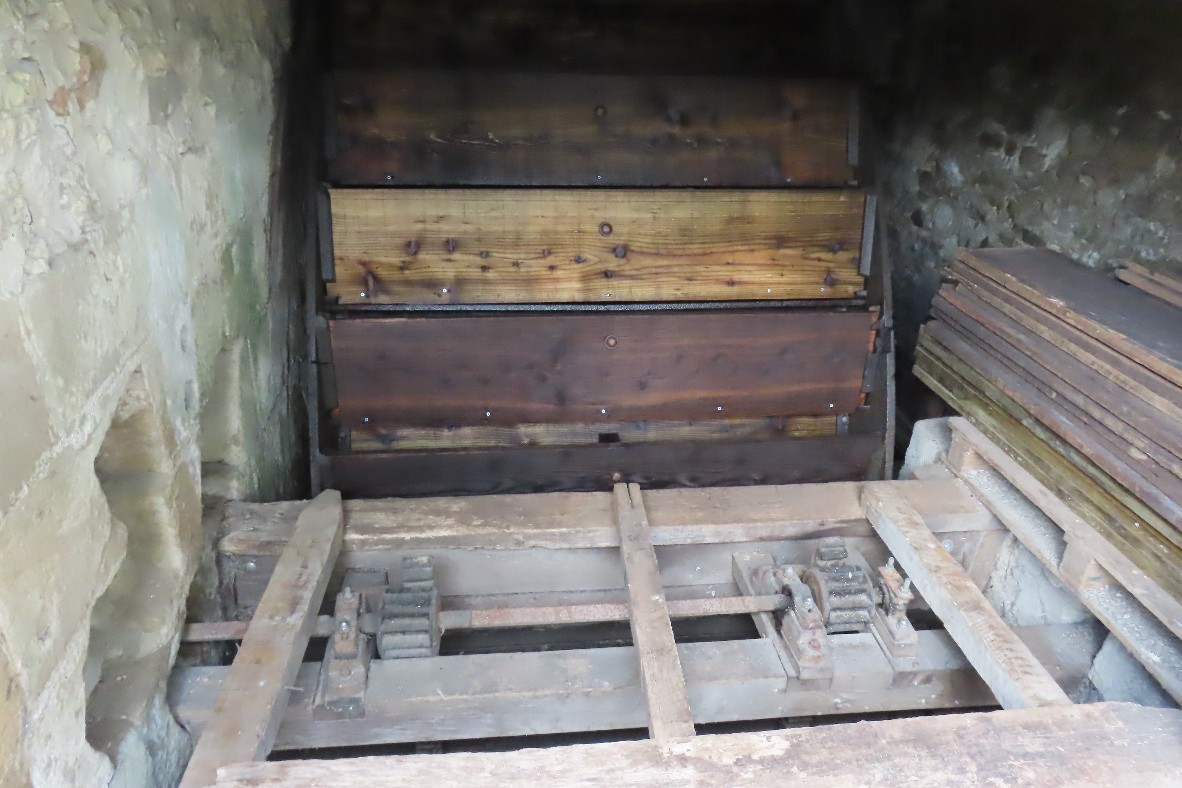
The low breastshot water wheel has cast iron shrouds
and timber boards,
which have been very recently replaced; the old ones
are still in a pile outside.
You can see them in the picture of the mill, under
the palettes. |
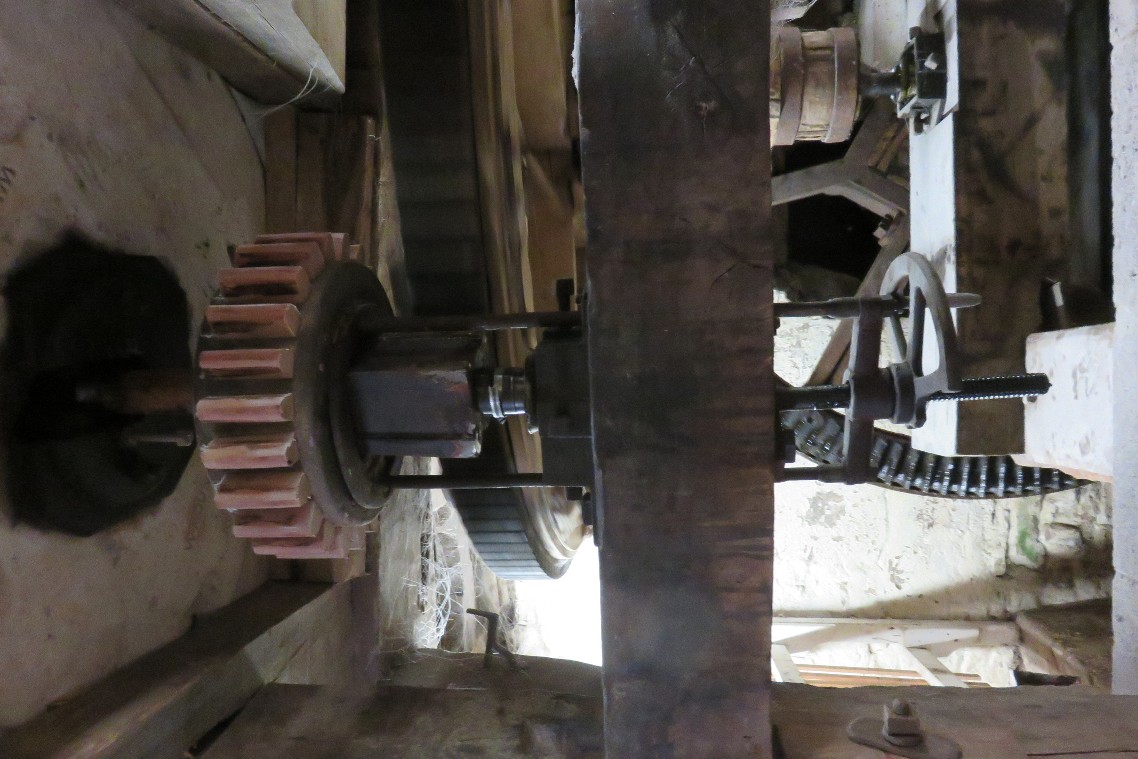
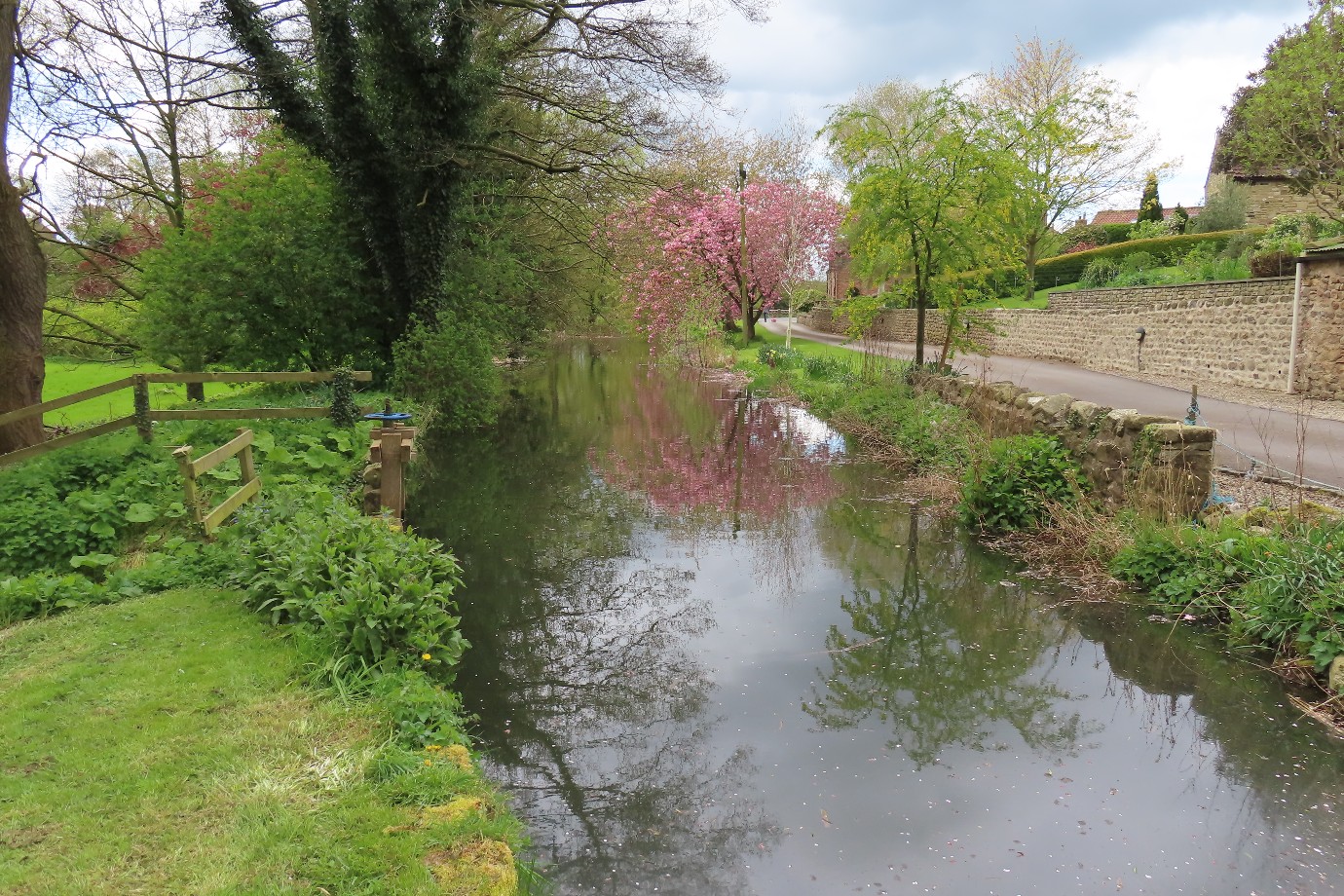
The ‘mill pond’ is a 100m reservoir stream,
alongside the drive to the mill.
It is controlled by a sluice in the retaining wall of the beck, on the
other side of the main road. |
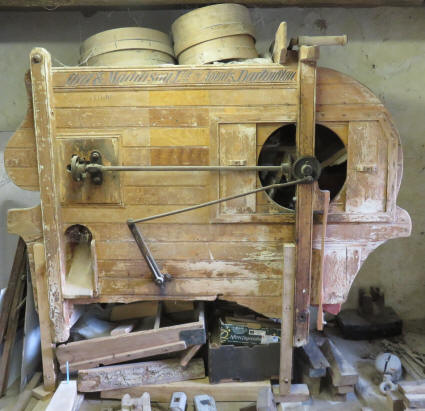 |
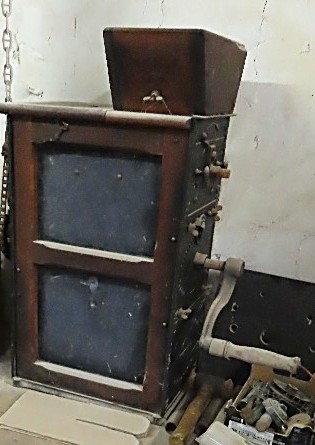
The words read
gardners patent
rapid sifter & mixer, gardener & sons, engineers,
gloucester |
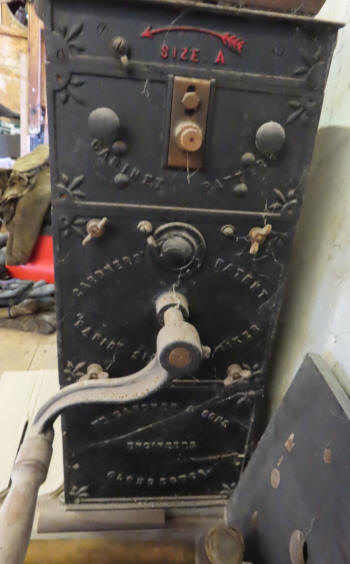 |
|
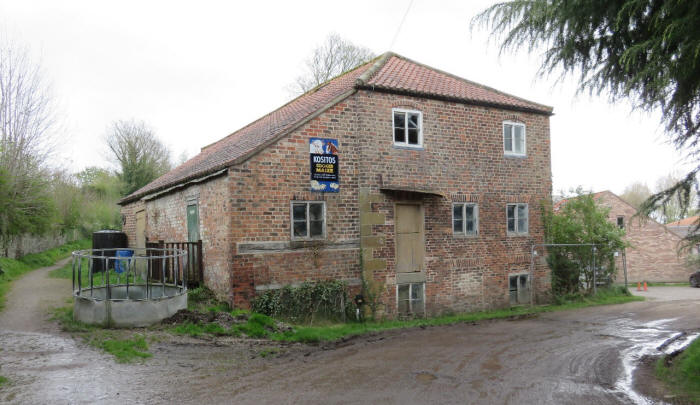
Our second mill, Aiskew Mill, was in Bedale
itself, also on Bedale Beck. Sadly the building is
closed up and neglected, and the external wheelpit
is full of vegetation, which gives some idea of how
long it has been out of use. We only found it
because it was marked on the map. It is reputed to
have been built in the late 18th century, and to
have a full set of surviving machinery. In 1982 it
was grade 2* listed and sold to David and Carol
Clark, who gradually restored it, with the intention
of opening it as a working museum. In 2001, they
proposed to fund the remainder of the restoration by
building housing on neighbouring land, but this was
rejected by a planning inspector. In 2010 the mill
reputedly reopened as a community bakery. The
Bedale Community Bakery is now situated in modern
industrial premises alongside.
|
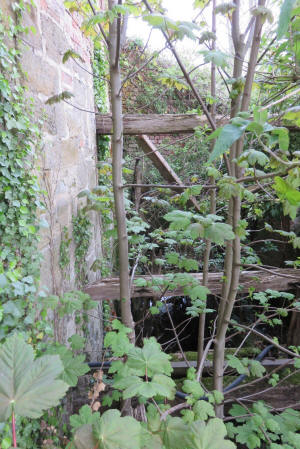 |
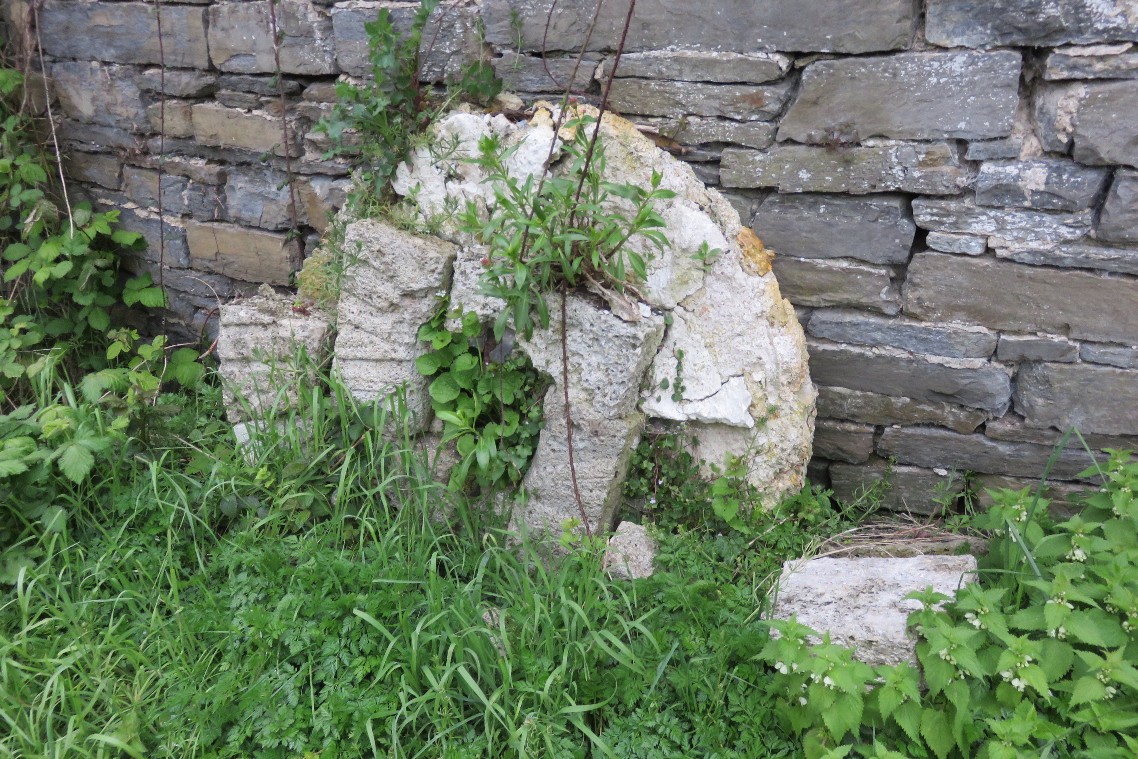
This is what happens to a pair of French buhr stones
after they have been
left out in the weather for many years.
There are very few visible parts of the waterwheel
left in the wheelpit,
but it looks to have had metal hubs with radial
spokes.
|
|
Bainbridge Low Mill is a now a guest house,
but the late 18th-century stone-built cornmill still
has extensive machinery all throughout the building,
including the remains of 4 sets of millstones. It
faces on to the village green and backs on to the
river Bain, a tributary of the Ure. For pictures of
the inside, look at the mill’s entry on Tripadvisor. |
 |
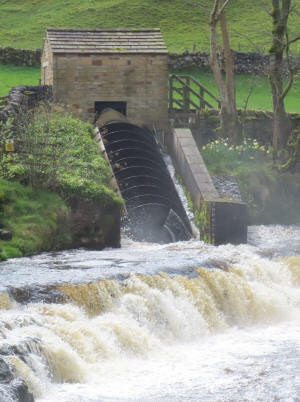 |
Also in Bainbridge, upstream there is a modern
hydro installation with an Archimedes screw, which
was working at an incredible rate in the almost
flood conditions that you can see in the pictures
here.
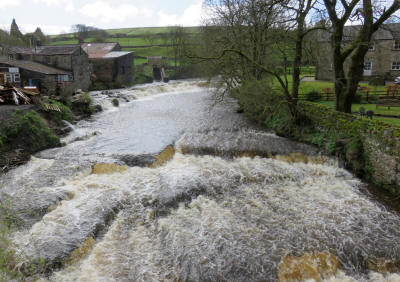
|
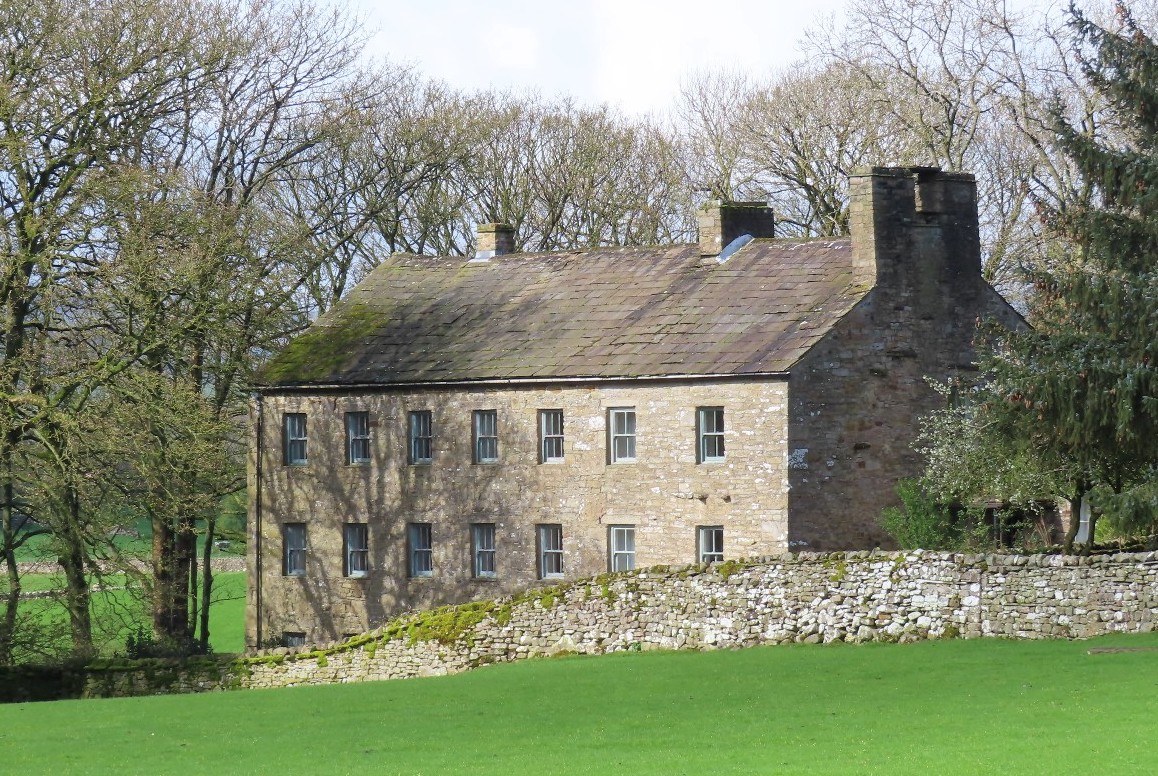
This is a similar story to Gayle Mill (right)
on Gayle Beck, also feeding into the Ure, which we
featured in newsletter 135 (winter 2021);
it is a very early corn mill, then cotton mill, then
sawmill,
and has a very prominent leat which starts at the
weir in the foreground of this picture. |
At Askrigg (left) on Mill Beck which feeds
into the Ure, West Mill is is a grade 2 listed
early-mid-19th century mill, labelled ‘Flax Mill’,
which is now an outdoor centre. It was formerly a
corn mill and latterly a sawmill, specialising in
the manufacture of hay rakes.
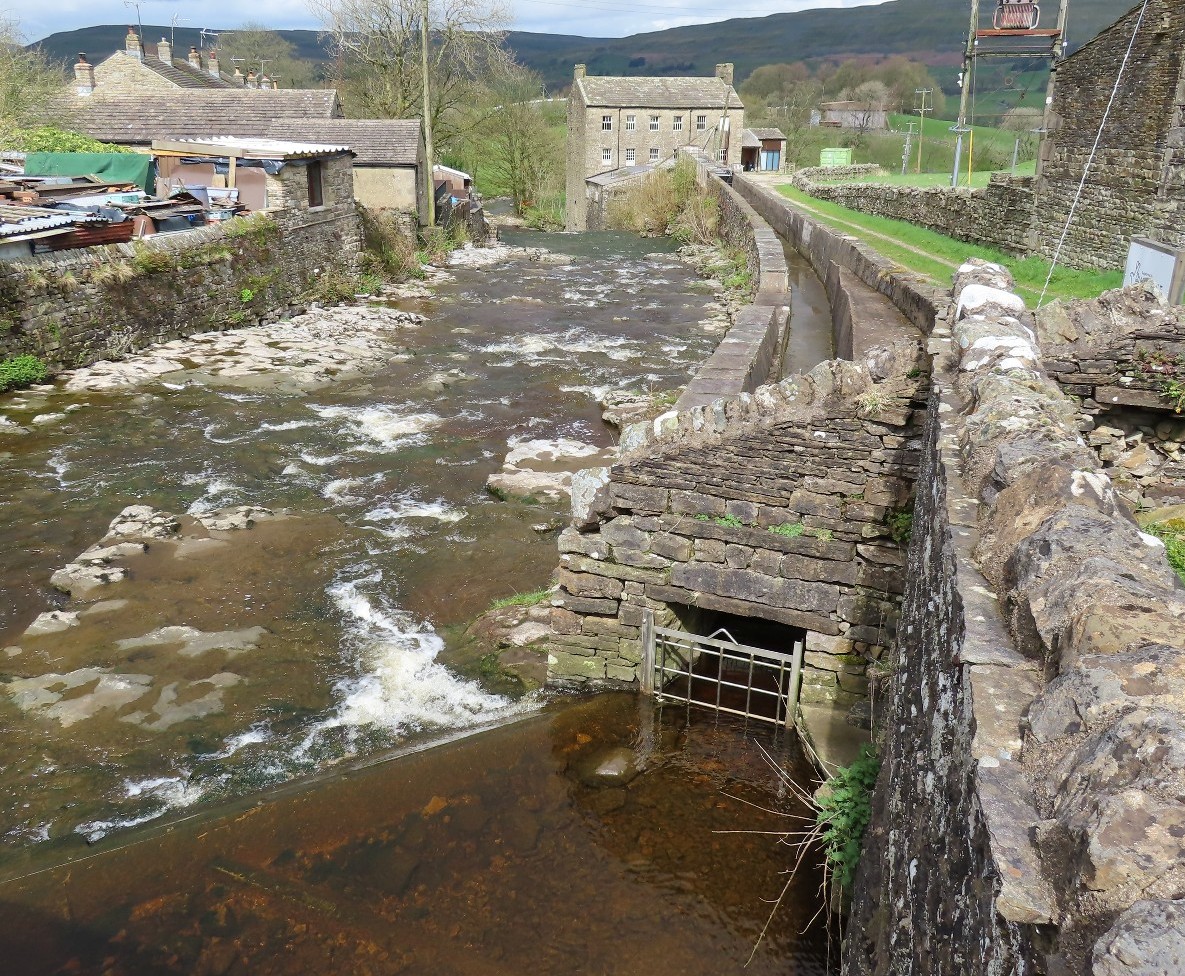
|
|
At West Burton the main attraction is
Cauldron Falls (right) on Walden Beck, again feeding
into the Ure. On the right of picture in the
foreground, notice the remains of the leat which
supplied a corn mill downstream (below right).
The mill, which originally had a waterwheel and
supplied provender for cattle, had a turbine
installed in 1913. This generated West Burton’s
electricity, not always efficiently. Autumn leaves
often jammed the turbine. In winter, when
electricity demand was highest, the supply allowed
only very dim street and house lighting.
Independent generation of electricity from the mill
ceased in 1948 when the National Grid reached the
village.
Once again, notice the flood state of the beck, and
the brown peat-stained water.
|
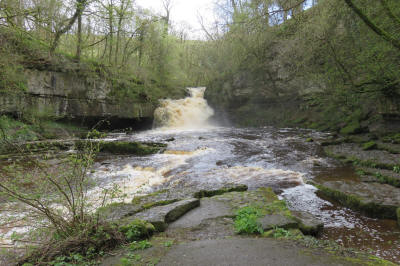
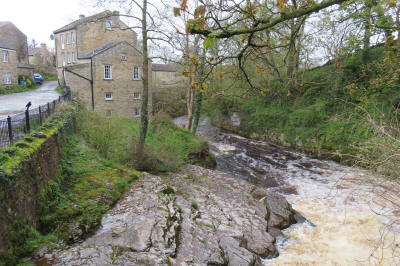
|
|
Finally, on the River Ure (or Yore) itself, which
gives its name to Uredale, the alternative name of
Wensleydale, is Yore Mill at Aysgarth Falls.
This is the largest mill of them all. It was built
in 1854 and is on the site of a medieval fulling
mill, next to the river crossing of Yore Bridge,
just below the famous falls. It replaced a late
18th century cotton mill that burnt down in 1853.
This was a combined corn and woollen mill. By the
late 19th century it was used only as a corn mill,
making it one of the largest in the dale. |
|
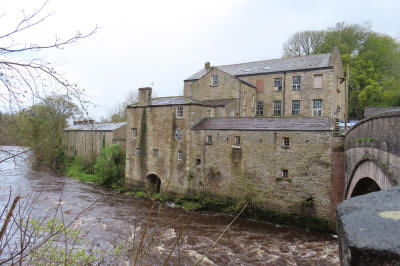 |
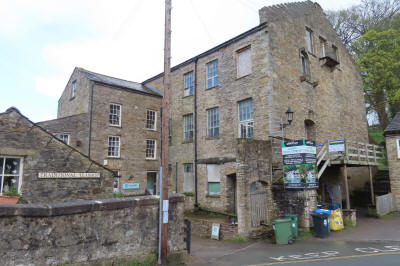 |
|
Information from the websites of the various mills,
Upper Wharfedale Field Society,
and Historic England. |
|
   |
|
|
